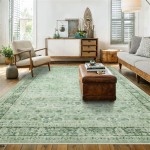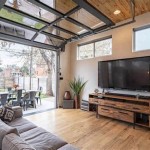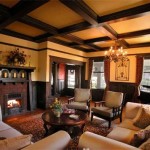Harmonious Hues: Exploring Cohesive Living Room and Kitchen Color Schemes
Selecting the right color scheme for a home’s living room and kitchen requires careful consideration. These spaces often flow into each other, creating a unified living area. A well-chosen color palette can enhance the visual appeal, create a sense of harmony, and improve the overall ambiance of the home. The goal is to achieve a cohesive aesthetic that reflects personal style while maintaining a balanced and inviting atmosphere.
Color profoundly impacts mood and perception. Warm colors like reds, oranges, and yellows can evoke feelings of energy, warmth, and comfort. Cool colors such as blues, greens, and purples are often associated with tranquility, serenity, and relaxation. Neutral colors, including whites, grays, and beiges, provide a foundation for versatility and can be combined with bolder accent colors to create depth and interest. Thoughtfully considering these color associations is crucial when designing a harmonious living room and kitchen.
Understanding Color Theory for Interior Design
Before selecting specific colors, it is helpful to understand basic color theory concepts. The color wheel is a visual representation of colors arranged according to their chromatic relationship. Complementary colors are located opposite each other on the color wheel (e.g., blue and orange), and when used together, they create a vibrant contrast. Analogous colors are located next to each other on the color wheel (e.g., blue, blue-green, and green), and they create a harmonious and soothing effect. Triadic colors are three colors equally spaced on the color wheel (e.g., red, yellow, and blue), and they offer a balance of vibrancy and visual interest. Understanding these principles allows for a more informed and strategic approach to color selection.
Monochromatic color schemes involve using variations of a single color. This can be achieved by using different tints, tones, and shades of the chosen color. For example, a monochromatic blue scheme might incorporate light blue walls, navy blue furniture, and teal accents. Monochromatic schemes are typically elegant and calming, but it's important to introduce texture and varying materials to prevent the space from feeling flat or monotonous.
Complementary color schemes involve pairing colors that are opposite each other on the color wheel for a striking, high-contrast effect. For instance, pairing a warm yellow kitchen with a cool blue living room can generate a dynamic and visually stimulating environment. It's important to use one color as the dominant hue and the other as an accent to prevent the space from feeling overwhelming.
Analogous color schemes rely on colors that are adjacent to each other on the color wheel to create a harmonious, serene effect. For example, combining greens, blues, and purples in the living room and kitchen can create a calming, nature-inspired palette. Analogous schemes are visually pleasing and easy on the eyes, making them well-suited for creating a relaxing atmosphere.
Popular Color Scheme Combinations for Living Rooms and Kitchens
Several color scheme combinations have emerged as popular choices for creating visually appealing and cohesive living room and kitchen spaces. These combinations often leverage color theory principles to achieve balance, harmony, and aesthetic appeal.
Gray and White with Wood Accents:
This is a timeless and versatile combination. Gray provides a neutral backdrop for the living room walls and cabinets, while white is used for trim, countertops, and backsplash in the kitchen. Warm wood accents in furniture, flooring, or shelving add a touch of natural warmth and texture, preventing the space from feeling sterile. This scheme works well with various design styles, from modern minimalist to farmhouse chic.Blue and Beige with Copper Accents:
A calming blue for the living room walls complements a soft beige for the kitchen cabinets and countertops. Copper accents in lighting fixtures, hardware, and decorative items add a touch of sophistication and warmth. This combination is particularly well-suited for coastal or traditional style homes. The blue and beige provide a sense of serenity, while the copper adds a touch of elegance.Green and Cream with Gold Accents:
A muted green for the living room walls creates a calming and nature-inspired atmosphere. Cream-colored kitchen cabinets and countertops provide a light and airy feel. Gold accents in lighting, hardware, and decorative items add a touch of glamour and sophistication. This combination works well in both traditional and contemporary settings. Consider using different shades of green to add depth and complexity to the scheme.Black and White with a Pop of Color:
A classic black and white palette provides a clean and modern foundation. Black cabinets or countertops can be paired with white walls or appliances in the kitchen. The living room can mirror this with white walls and black furniture pieces. Adding a pop of color, such as a vibrant red, yellow, or turquoise, through accessories, artwork, or a statement piece of furniture, injects personality and visual interest. This scheme thrives on simplicity and can be easily adapted to different personal styles.Warm Neutrals with Earthy Tones:
This combination utilizes a range of warm neutral colors, such as beige, tan, and taupe, for walls, furniture, and cabinets. Earthy tones like terracotta, olive green, or burnt orange are incorporated as accent colors in textiles, artwork, and décor. This scheme creates a cozy and inviting atmosphere, perfect for creating a relaxed and comfortable living space. The use of natural materials like wood, stone, and woven textures further enhances the earthy feel.Factors Influencing Color Scheme Selection
Several factors beyond personal preference influence the selection of a suitable color scheme for a living room and kitchen. These factors include the size and layout of the space, the amount of natural light available, the existing architectural features, and the desired style of the home.
Size and Layout:
Smaller spaces benefit from light and airy colors that can create the illusion of more space. Darker colors can make a small room feel cramped and confined. Larger open-plan spaces can accommodate bolder color choices and more complex color schemes. Consider the flow between the living room and kitchen and how the color scheme can visually connect the two spaces.Natural Light:
Rooms with abundant natural light can handle a wider range of colors, including darker hues. Rooms with limited natural light benefit from light and reflective colors that can brighten the space. Consider the direction of the windows and how the light changes throughout the day. Artificial lighting can also impact how colors appear, so it's important to test colors under different lighting conditions.Architectural Features:
Existing architectural features, such as flooring, trim, and built-in cabinets, can influence the color scheme selection. Consider the color and material of these features and choose colors that complement them. For example, if the kitchen has warm wood cabinets, consider incorporating warm tones in the living room to create a cohesive look.Desired Style:
The desired style of the home, whether it's modern, traditional, coastal, or farmhouse, will influence the color scheme selection. Modern homes often feature minimalist color palettes with clean lines and geometric shapes. Traditional homes tend to incorporate richer, more saturated colors and ornate details. Coastal homes often feature light and airy colors inspired by the sea and sky. Farmhouse homes typically incorporate warm neutrals, natural materials, and rustic accents.Ultimately, the ideal color scheme for a living room and kitchen is one that reflects personal taste while creating a cohesive, inviting, and functional living space. Careful planning, consideration of color theory, and attention to detail are critical to achieving a successful and visually appealing outcome.

52 Best Kitchen Paint Color Ideas And Combinations For 2025

Choosing A Palette For An Open Floor Plan Colorfully Behr

How To Choose A Palette For An Open Floor Plan

40 Best Kitchen Color Ideas For 2024

17 Living Room Color Palettes Our Designers Love Havenly Interior Design Blog
:max_bytes(150000):strip_icc()/WhiteSands_Pine_008-5555f6a4cbdb410ea74bde652e9d73f5.jpg?strip=all)
28 Open Kitchen Living Room Ideas To Create A Cohesive Space

65 Best Kitchen Paint Color Ideas And Combinations For 2025

37 Kitchen Paint Ideas That Will Revitalize Your Space
:max_bytes(150000):strip_icc()/southslope12961-e55f4d87d3ec444998fd51293856086f.jpg?strip=all)
12 Living Room Color Schemes That Will Make It Your Favorite Space

21 Kitchen Cabinet Ideas Paint Colors Inspiration Beamin Moore








